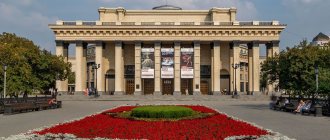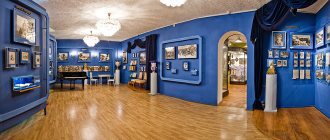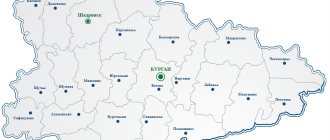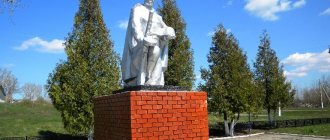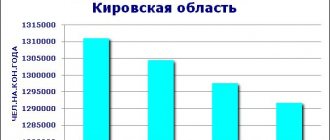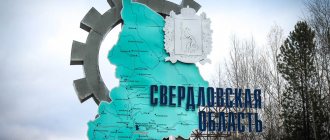The Kurgan region is located in a unique area, at the junction of the Urals and Siberia , where healing springs of mineral water have been flowing out of the ground for many centuries.
The Kurgan region is a repository of exceptional and unique places, an ensemble of provincial antiquity, the memory of the Decembrists, architectural and temple architecture of past centuries and shrines, combined with modernity, impressing with its spiritual power. Vast expanses of hunting grounds and over three thousand lakes for fishing, recreation, treatment and recovery.
Aviation Museum
When the museum was created in 1985, it was given the name “Kurgan Airport Museum ,” but 8 years later, upon completion of the main set of the exhibition, it was decided to rename the museum “Kurgan Aviation Museum .
This place is rightfully considered one of the brightest attractions of Kurgan and the region. Here you can not only learn the history of Trans-Ural aviation from 1912 to 2000, but also examine 15 different aircraft from all sides, including the interior. The museum's collection includes a front-line bomber, passenger and transport aircraft, interceptor fighters, multi-role aircraft and others. There is even one helicopter on the territory - Mi-2 .
In addition, each visitor can test his piloting skills using a flight simulator, view a collection of pilot uniforms from different periods, and see photos and documents dedicated to the development of airspace. The Aviation Museum is located near the airport at Gagarin Street, 41a.
Epiphany Cathedral
The cathedral, built in 2015, is one of the youngest churches in Russia . For Kurgan, the new church became a gift not only for the believing citizens - its design and decoration became a real architectural pearl of the city. The five-domed temple is a prominent representative of the pseudo-Russian style.
The Epiphany Cathedral is located in one of the most picturesque places in Kurgan - on the bend of the Tobol River . Within the walls of the church, services and various events are held - for example, bell ringing festivals are held with the participation of the best bell ringers in Russia . The cathedral is located at: Klimova street, 3.
Kurgan Regional Art Museum
The Kurgan Art Museum opened its doors to its first visitors on August 14, 1982. The building where the museum is located was designed by Kurgan architect Yu. I. Veshchikov and built in 1981.
Within the walls of the museum there are 10 exhibition halls and one lecture hall. The Kurgan Art Museum is the only one in the region that owns collections of works by Russian artists of the 20th – early 21st centuries. The museum is located at: Maxim Gorky Street, 129.
Alexander Nevsky Cathedral
The Cathedral of St. Alexander Nevsky is the main Orthodox church in the Kurgan region . Construction of the temple began in the last years of the 19th century on the territory of the cemetery. The main financial assistance for the construction of the temple was provided by the local merchant Smolin , who never lived to see its opening. Out of respect for the merchant and his contribution to the cathedral project, it was decided to bury him here - behind the altar of the future Alexander Nevsky Cathedral .
In 1902 the temple was consecrated. The first mentions of the cathedral remained in documents from the beginning of the 20th century: “The red brick church building was erected in connection with the bell tower. The inside of the church is very splendid, decorated with artistic wall paintings, and the floor is made of metal tiles. “The iconostasis had icons of high artistic work and among them the image of Grand Duke Alexander Nevsky .”
Photo by: Yuri Kholod
In 1929, the temple came under anti-religious policies and was reclassified as a warehouse. Afterwards, the premises changed its purpose more than once - it housed a local university, a local history museum and a planetarium. Restoration of the temple began after the collapse of the USSR in 1991.
Today the Cathedral is operational - its doors are open to the public every day. The cemetery on which the cathedral was built no longer exists - now in its place is the City Garden . Cathedral address: Volodarsky Street, 42.
City Garden
On the site of the modern City Garden, the first city-wide cemetery in Kurgan , founded in 1786. The necropolis existed until 1860, when it was decided to close it, being in the very center of dense urban development. The City Garden included the gardens of the former Gogol School , the Moscow Society of Agriculture and the Alexander Cemetery .
Today, the City Garden is one of the central recreational places for citizens - there are attractions, a children's entertainment complex, cafeterias, and various cultural organizations. The park also often hosts various city events.
On the territory of the City Garden there is a memorial complex and an obelisk in memory of the fallen commissars in the struggle for the power of the soviets . Both monuments are cultural heritage sites of regional significance.
The construction of the memorial complex was timed to coincide with the 50th anniversary of the liberation of the Trans-Ural region from Kolchakism. The monument was made by the young Kurgan sculptor S. A. Goloshchapov and architect G. A. Zakharov . According to the plan, the monument, depicting the relief figures of a girl with a rifle and a wounded Red Army soldier against the background of a white wall, is intended to personify the eternity of the revolutionary spirit, the immortality of the heroes of the Civil War . The opening of the monument took place on August 15, 1969. Today, all that remains of the monument is a white wall and the silhouettes of two figures.
A triangular obelisk, erected in memory of the ten first worker and peasant commissars of Kurgan , stands on the central alley of the City Garden .
In addition, there are quite a lot of different memorial structures on the territory of the garden - the “Golden Ring” stele , a cross in memory of those who died as a result of the Chernobyl disaster , a monument to the Decembrists, a sculptural composition “Parents” . There are also various decorative structures located in the garden. The central entrance to the park is located at Lenina Street, 23a.
Fire station
The fire station or, as it is also called, the “fire tower” is one of the most recognizable landmarks of Kurgan . Its history dates back to 1830, when a wooden fire station and a tower intended to monitor the city were built on this site. Since then, the building has been rebuilt several times and changed owners.
Kurgan Regional Museum of Local Lore
The museum was opened on November 10, 1951 in the building of the Cathedral of St. Alexander Nevsky . Today, the museum has more than 200 thousand objects included in 40 collections that cover the life of the region from primitive people to modern ones. Among the museum's exhibits there are unique items that are of regional and federal significance. Museum address: Pushkin Street, 137.
The Kurgan Museum of Local Lore includes several structural divisions. Among them are the House-Museum of the Decembrists , the House-Museum of V.K. Kuchelbecker , the Museum of the History of the City , the House-Museum of T.S. Maltsev .
Kilometer Zero sign
The sign, which is the starting point for road distances, exists in almost every city in every country. In Russia, zero kilometers are usually designated as a round metal insert in the road surface; mileposts are occasionally installed. Each, of course, has its own original design and pattern. However, in Kurgan they decided to approach the installation of the zero kilometer as creatively as possible.
“Zero Kilometer” is a whole composition here. Its basis is a border pillar, at the top of which stands an o, and is complemented by a bronze postman examining letters from his bag. It is believed that the bag has magical properties - if you rub it and make a wish, it will definitely come true.
The sculptural composition was erected in 2012, on the occasion of the 333rd anniversary of the city of Kurgan . You can find it at: Gogol Street, 44.
Monument “They Serve Science”
The monument was erected in 2012 on the territory of the Ilizarov Center . The purpose of the sculpture is to pay tribute to the dogs who took part in testing various medical devices and drugs, as well as the work of experimenters.
The monument is a dog cast in bronze, mounted on a pedestal made of red jasper. The prototype of the sculpture was a shepherd dog, on whose leg an external fixation device was installed for scientific purposes.
It is believed that if you stroke a dog's paw, a faithful friend will soon appear. You can find the sculpture at the address: Ulyanova Street, 6a.
Mansion of F. F. Ostapets
The mansion was built according to the design of the Kurgan architect A. Basargin in 1905 for the engineer, retired warrant officer F. F. Ostapets . After the revolution, the building was used as a living space, then it became a haven for several children's institutions. Today, within the walls of the building there is a City Culture and Leisure Center .
photo: kurgan.pro
The building is an example of a residential log house made in the Art Nouveau style. The two-story building with carved windows and a pointed bay window attracts the attention of many citizens and tourists of the city. The building is located at the address: Pushkin Street, 85.
